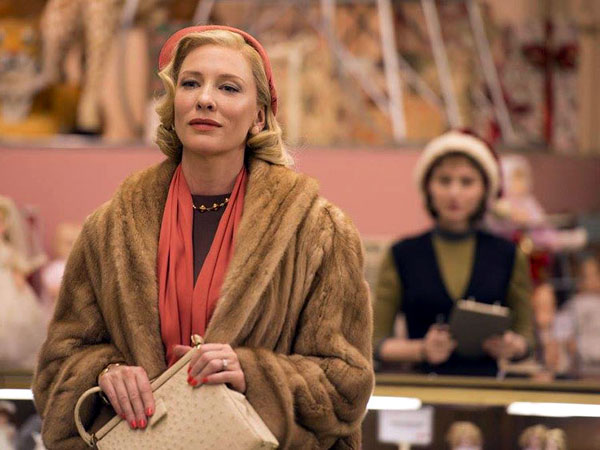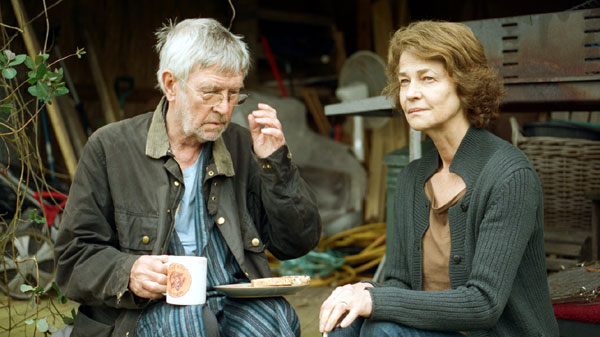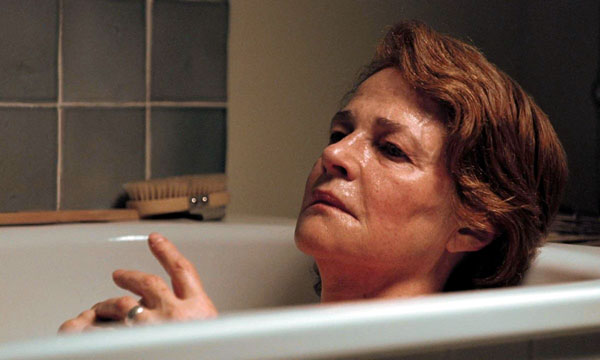|
Director Todd Haynes specializes in films about people trapped by societal prejudice, both racial and sexual. Most of them, such as Far from Heaven and his TV-miniseries remake of Mildred
Pierce, have been set in the Forties and Fifties, all the better to sharpen the contrast between the reasonable desires of the characters and the unreasonable demands of
“respectable” society. Haynes’ latest film, Carol, is his best so far, a delicate and moving love story of two women who have the temerity to fall
in love with each other in the New York of the early Fifties.
Carol is blessed with a superbly constructed screenplay by Phyllis Nagy, based on the 1952 novel The Price of Salt by Patricia
Highsmith. (The subject was so scandalous then that Highsmith was forced to publish the novel under the pseudonym of Claire Morgan.) The tone of melancholy romance
is sustained throughout; Haynes and Nagy even give a nod to that most poignant of romantic films, David Lean and Noel Coward’s Brief Encounter, beginning and ending
their film with a sad tete-a-tete between the main characters that is interrupted by a clueless friend.
The film begins during the Christmas season, with Therese Belivet (Rooney Mara), a department store clerk and aspiring photographer, waiting
on wealthy suburban divorcee Carol Aird (Cate Blanchett). Carol accidentally—or perhaps not so accidentally--leaves her gloves on Therese’s counter; Therese
obtains her address and mails them back. Carol invites Therese to lunch as a thank-you gesture, and it is from here that the relationship begins.

It is also from here that the details of the two women’s lives come into focus. Young and naïve, Therese has lots of young
men in her life—including Richard (Jake Lacy), her slightly dim fiancé, and Dannie (John Magaro), who is helping her break
through as a photographer—but none of them interests her greatly. The older, more sophisticated Carol has a strained
relationship with her ex-husband Harge (Kyle Chandler) and a lingering custody fight over their small daughter Rindy. The
divorce was caused largely by Harge discovering the true nature of Carol’s friendship with Abby Gerhard (Sarah Paulson). If he
gets wind of any further information of that sort, he will have more than enough grounds to seek full custody.
These are the circumstances under which Carol and Therese’s infatuation blossoms into passion. It is masterful on Haynes’
part that the love of Carol and Therese seems to build slowly, when in fact it is a fait accompli in a matter of days. By New
Year’s they have embarked on a spur-of-the-moment road trip into the Midwest, and it is on this trip that they become lovers in
the physical sense. (Haynes’ presentation of their love scenes is exquisitely tender and poignant.) Unfortunately, the real world
of 1952 comes crashing down on them, threatening their love and—in Carol’s case at least—her very place in society.
The tone of Carol is muted, the entire film seeming to take place in twilight. Photographer Edward Lachman, production
designer Judy Becker and costume designer Sandy Powell create a milieu that is rich and deeply shadowed—all the better for
Haynes to depict a love that in 1952 dared not speak its name. Yet the true impact of the film comes from the performances of
Blanchett and Mara, and these are two of the greatest performances I have seen in any film. From the delicate inflections of their gestures, facial expressions and vocal
nuances, we see in bas relief the disappointments of their lives and the joy they feel in each other’s presence. The subtle
transformation Blanchett undergoes as Carol—from brittle and vaguely predatory, to tender and loving, to desperate—is little
short of miraculous, and Mara’s portrayal of Therese unfolds with the exquisite precision of a maturing rose.
As for its ending, Carol steers a middle course between the swooning romanticism of Maurice and the bleak determinism of A Single Man. (It is resoundingly different from the doom-laden
ending of The Children’s Hour, the lesbian-themed film released several years after the events in Carol.) The unresolved but hopeful final scene of Carol suggests that change—if not in
Carol’s or even Therese’s lifetime—is on its way.
As horrible as it is to be denied the love of your life because of societal pressures, there is something that conceivably is worse:
to discover that the person you’ve loved and lived with all your life is not, in the end, in love with you. This is what happens in 45 Years, the quietly heartbreaking new film by Andrew Haigh.

The Mercers—Kate (Charlotte Rampling) and Geoff (Tom Courtenay)—are a childless retired couple living in a pretty
cottage in the Norfolk countryside. Geoff has some ongoing problems related to a heart attack from a few years back, but
generally he and Kate live contentedly, and look forward to the big party to celebrate their 45th wedding anniversary.
One morning a week before the party, Kate comes back from walking the dog to find Geoff reading a letter. Almost
offhandedly, he tells Kate the contents: the perfectly preserved remains of Katya, the girl he was engaged to before he met Kate,
have been found in a Swiss glacier more than 50 years after she fell to her death on a hiking trip with Geoff.

At first this news makes little difference in their lives, but soon changes start to appear. Geoff becomes uncharacteristically
moody; he starts smoking again, which he stopped after the heart attack, and he declares that he doesn’t want to attend a
reunion lunch with his old buddies from work, which previously he’d looked forward to.
Geoff also starts spending a lot of time in the attic. The screenplay by Haigh, based on a short story by David
Constantine, has told us Kate already knew about Katya, but she and Geoff have seldom if ever discussed Katya previously. It
also has told us that Kate and Geoff have a singular lack of photos of themselves around the house. However, when Geoff is
off in town, Kate takes the opportunity to go up to the attic herself, and finds a wealth of pictures, notebooks and projector
slides of Geoff and Katya. On a hunch during her next time in town, Kate stops by the local travel agent, and discovers
that Geoff has inquired about airplane tickets to
Switzerland—for one.
45 Years is a prime example of the understated domestic tragedy the British do better than anybody. The vibrant soundtrack, a
mix of classical music and golden oldies, underscores the growing disconnect between a couple that in the beginning
seemed utterly solid. Rampling and Courtenay are the only actors on screen for most of the movie, and in a series of small
gestures and glances they lay bare the gulf that has suddenly opened between Kate and Geoff.
“So you think you haven’t been enough for me?” Geoff eventually asks.
“Of course I’ve been enough for you!” Kate snaps back. “I just don’t know if you think so!”
That is the closest thing to an outright confrontation in
45 Years. Things seemingly go back to normal after that, and
Geoff becomes more attentive to Kate. But the audience sees that the 45th-anniversary party, outwardly a warm affair, is
anything but. Kate’s final, helpless gesture on the dance floor demonstrates her realization that she has danced alone all her
life. It is an unforgettable moment in an unforgettable film.
|